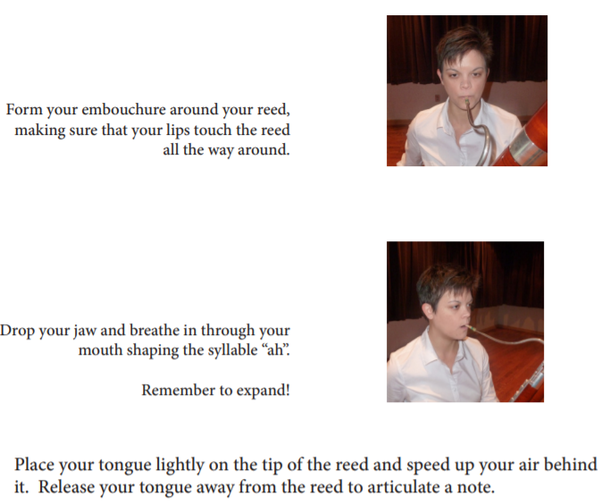Articulation is often misconceived to be a product of the tongue, but we must always remember that air is responsible for starting notes, not the tongue. This is most often heard in missed attacks or overly explosive note beginnings. I advocate the following tone production process, which pays particular attention to what happens the moment immediately prior to articulation.
At that point:
We also do well to remember that the double reed system requires both reeds to vibrate in order for sound to happen, so the inverse is true as well - you only need to stop one reed to end the sound. The proper tongue placement on the reed is roughly one centimeter from the tip of the tongue (close to the position when speaking the word "the") and touching mostly the bottom blade of the reed. This will release tension in the mouth and jaw and ultimately allow for higher single tongue speed and easier transition to double tonguing.
At that point:
- tongue is on the reed
- lungs are full
- abdominal support muscles are engaged
- throat is open, allowing air into the mouth
- air inside the mouth is pressurized, poised to be released by the tongue
We also do well to remember that the double reed system requires both reeds to vibrate in order for sound to happen, so the inverse is true as well - you only need to stop one reed to end the sound. The proper tongue placement on the reed is roughly one centimeter from the tip of the tongue (close to the position when speaking the word "the") and touching mostly the bottom blade of the reed. This will release tension in the mouth and jaw and ultimately allow for higher single tongue speed and easier transition to double tonguing.
Check-In:
Describe one common misconception about bassoon articulation and how to overcome it.

